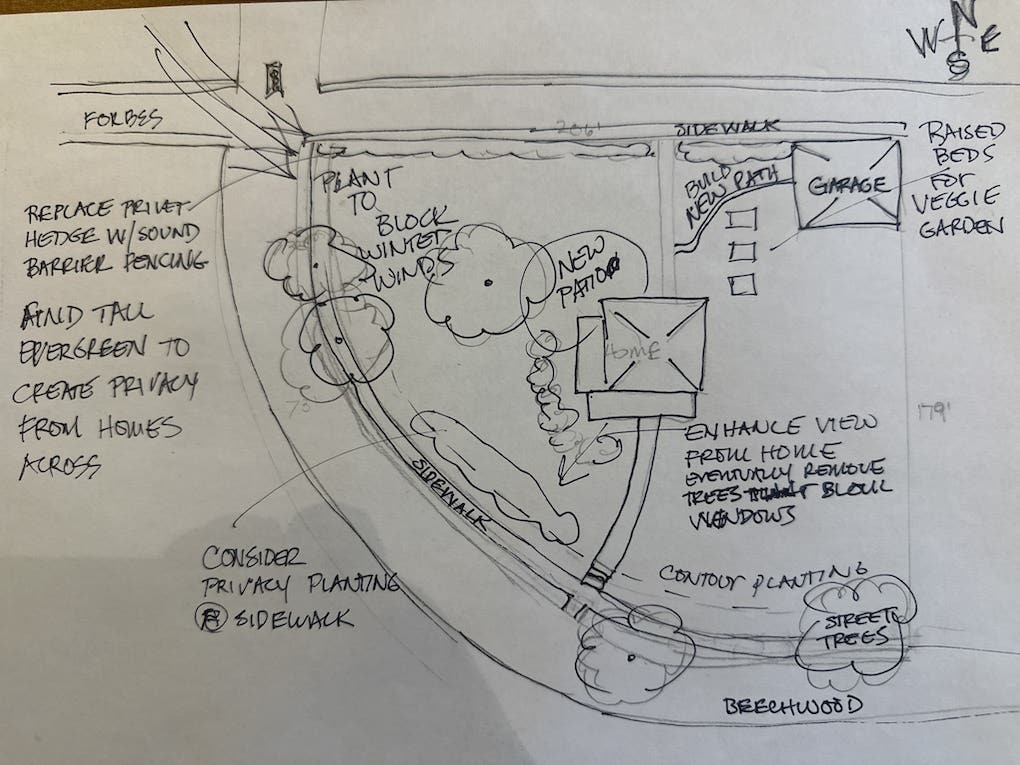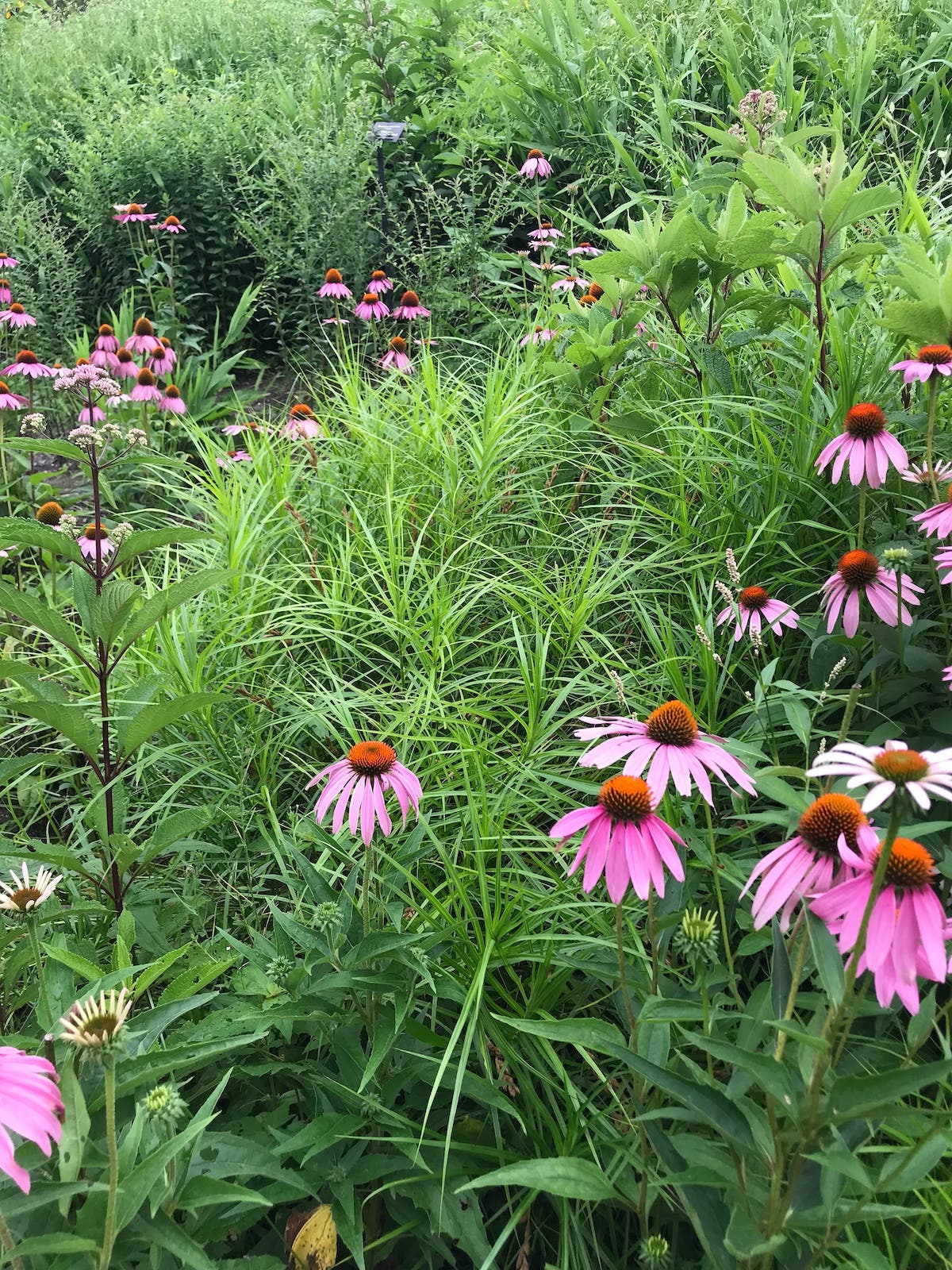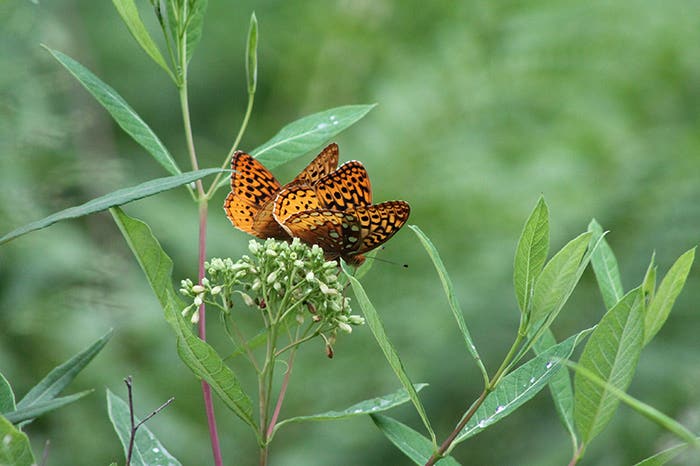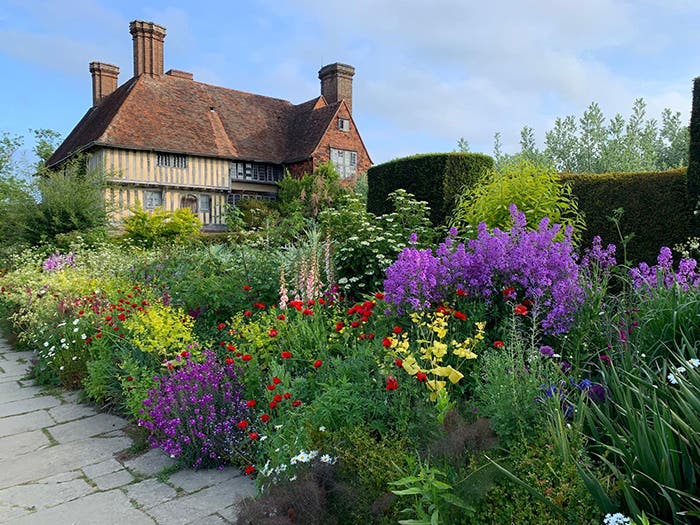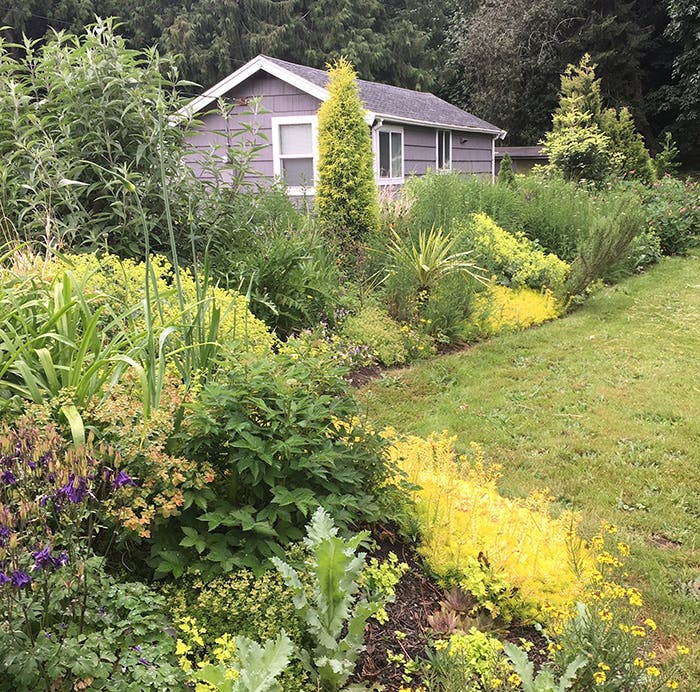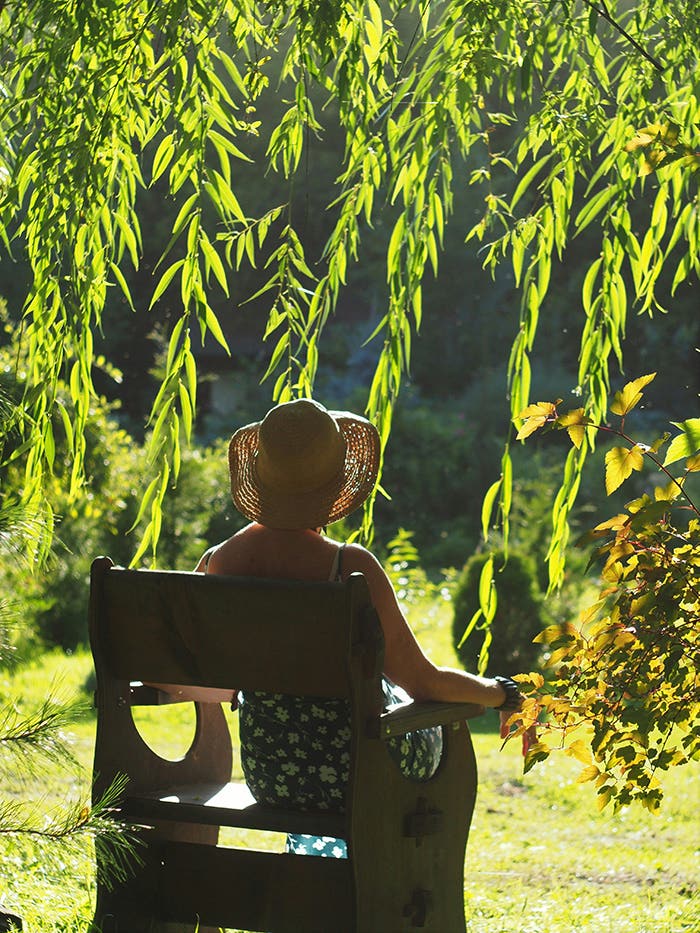Note: To read the basics behind designing a garden around the front entry of a home, see Daryl’s previous article “How to Design a Front Entry Garden.”
When making an entryway garden, it’s important to work on every level, including canopy, understory and ground cover, because this creates a truly 3D space. Therefore, use a range of plants—conifers, flowering trees and shrubs, ornamental grasses, herbaceous perennials, annuals and bulbs. Devise attractive plant combinations just as you would in a back-yard garden—in masses or small groups, with a complement of foliage, flowers and forms. Avoid “stadium plantings” (tall in back, short in front) by blending differently sized plants forward and back. Include light and airy see-through plants for depth of field and dense plants as visual anchors. Always plant what you love, and what you know.
Through my design work, I’ve found a few specific attributes suit a plant to the front-yard garden. This space—and its gardener—benefit from what I call “tidy growers”: trees like fastigiate hornbeam (Carpinus betulus ‘Fastigiata’), whose crown grows as a tall, narrow oval, and Japanese snowbell (Styrax japonicus), which remains under 30 feet tall, its strongly horizontal branches making a beautifully rounded crown.
For tidy shrubs I turn to broadleaf evergreens like ‘Tide Hill’ boxwood (Buxus sinica var. insularis ‘Tide Hill’), a selection that grows just one foot tall but slowly spreads to four feet wide, making a natural low hedge, and Pieris japonica ‘Cavatine’, a slow-growing dwarf pieris that grows two to three feet tall. Its irregular silhouette makes for an interesting informal hedge.
Herbaceous tidy growers include shade-loving hostas, hellebores and wild ginger (Asarum), all of which supply dense foliage toward ground level.
“Easy care” is another key category for the entry garden. The plants are always on display, so they need to look good without constant upkeep. Slow-growing Hinoki cypress (Chamaecyparis obtusa cvs.) and the dwarf Ginkgo biloba ‘Jade Butterflies’ serve as distinctive specimen trees without fuss.
At the shrub layer, dwarf Korean fir (Abies koreana cvs.) and bird’s nest spruce (Picea abies ‘Nidiformis’) are similarly low maintenance and provide interest year-round. Among herbaceous plants, there’s not much easier than ornamental grasses; compact types such as the foot-tall ‘Little Bunny’ fountain grass (Pennisetum alopecuroides ‘Little Bunny’) and two-foot, shade-loving Bowles’s golden sedge (Carex elata ‘Aurea’), work especially well in the front yard.
As much as the entry garden needs low-maintenance, consistent players, it also requires an eye-catching specimen or two. In this category I turn to Japanese stewartia (Stewartia pseudocamellia) for a small tree, or sturdy pin oak (Quercus palustris) where space allows. The former is a mid-size tree with year-round interest: spring flowers, summer and fall foliage, winter bark. The pin oak’s appeal comes from its architecture: a tall, oval crown with slender, slightly weeping branches. It also offers good fall color in acidic soil. Eye-catching shrubs for the front garden include all-season bloomers like KnockOut roses and Encore azaleas. For perennials, turn to plants with compelling foliage, such as round-leaved Ligularia dentata ‘Othello’, feathery autumn fern (Dryopteris erythrosora) and soft, silvery lamb’s ears (Stachys byzantina).
The finishing touch for any entry garden should be the addition of a fragrant plant. Fringe tree (Chionanthus virginicus) remains under 20 feet and blooms with subtly scented white flowers in spring. The slightly larger golden chain tree (Laburnum waterii) offers stronger fragrance from its namesake flowers. For shrubs, seek seductive oleander (Nerium oleander) or the intoxicating Korean spice viburnum (Viburnum carlesii).
Image credits
Japanese snowbell: Tatters/CC BY-SA 2.0
Hellebores: colored by/CC BY 2.0
Bird’s nest spruce: F. D. Richards/CC BY-SA 2.0
Autumn fern: Leonora Enking/CC BY-SA 2.0
Viburnum: Proven Winners


